Santorini, Greece was the site of one of the world’s largest volcanic eruptions in all recorded history. The eruption occurred about 3600 years ago and left a large caldera surrounded by volcanic ash deposits thousands of feet deep. That caldera filled with water and is now the Aegean Sea. The Santorini Volcano continues to be the most active in the area. Its last eruption was in 1950.
About 70 miles away, the Minoan Civilization of Crete was believed to have been destroyed around 1600 BC by a giant tsunami. An archaeologist investigating the theory discovered there had been a large volcanic eruption of Santorini Volcano around that same time and traveled to Santorini to learn more. His research uncovered the settlement of Akrotiri. Archaeological evidence proves there was a major earthquake on Santorini two weeks before the volcano erupted. It is believed the earthquake caused the people to abandon Akrotiri. Twenty minutes after the eruption the tsunami hit Crete, and soon after the town of Akortiri was buried in volcanic ash.
Buried in 20’ of volcanic ash Akrotiri was preserved much like Pompeii. The big difference between the two is that no human remains have been found in Akrotiri; archaeologists think this is because the earthquake served as a warning to the people that a major eruption was about to happen, giving them time for an orderly evacuation. Akrotiri happened about 1,000 before Pompeii. Prior to the volcanic eruption the sea level was much higher. Today Akrotiri sits high on a cliff, but back in the day it would have been a sea-side town.
Archaeologists have discovered that Akortiri had a city sewage system, water supply, paved roads and multi-storied buildings. The walls of the buildings were thick, providing good protection against the cold and against seismic activity. The corners of the buildings were reinforced with wooden beams indicating they were familiar with earthquakes and knew that wood absorbs earthquake tremors. The tallest building found to date is four stories tall. Beautiful paintings and ornate pottery have been found, indicating that these were people whose basic needs were being met, allowing them to spend their resources on more luxurious items. Furniture “molds” have been found that show what furniture might have looked like 3600 years ago. Much of the furniture was made of wood, which has long since decayed, leaving behind in the ashes molds that can be filled with plaster for a recreation of the original furniture. The ash was so tightly packed around the furniture artists can see the tiniest of details.
Portraits of fair-skinned women with make-up and jewelry suggests there were privileged women (working women would have had more exposure to the sun). Original ceramic jars with carbonized food particles provide insight to the diets of the people.
Amazing what you can learn from a pile of dirt! Fun fact: volcanic ash is also a great construction material. Thousands of tons of it was bought from Santorini and used to build the Suez Canal!
After Akrotiri we had time to grab some lunch and wander around the town. Santorini is situated high on a cliff overlooking the sea; there are only two ways up from the water or down: walk or ride a donkey up/down a very steep set of stairs or take the cable car. We opted to avoid the donkey droppings and took the cable car!

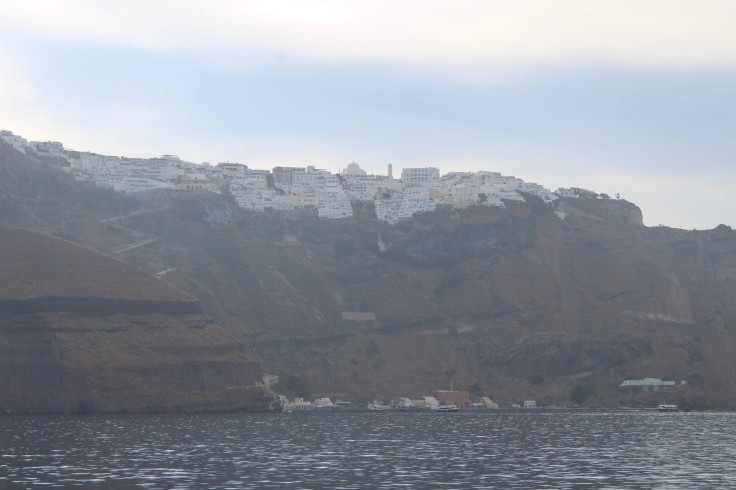
Santorini is a city on a hill. 
The views are incredible 
Akortiri Dig Site 
Akortiri dig sige 
The round object with rebar sticking out of it is a petrified Olive tree branch found laying on the roof of a building 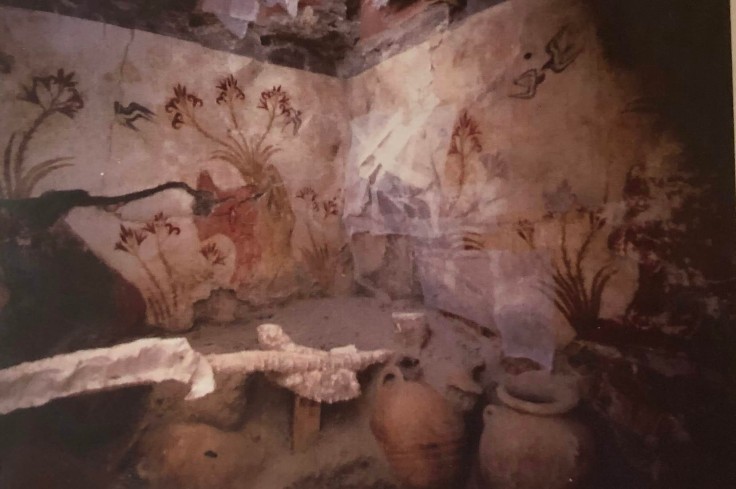
These Frescos were found in this condition – no restoration has been done 
Urns and pots found in the Room of Ladies 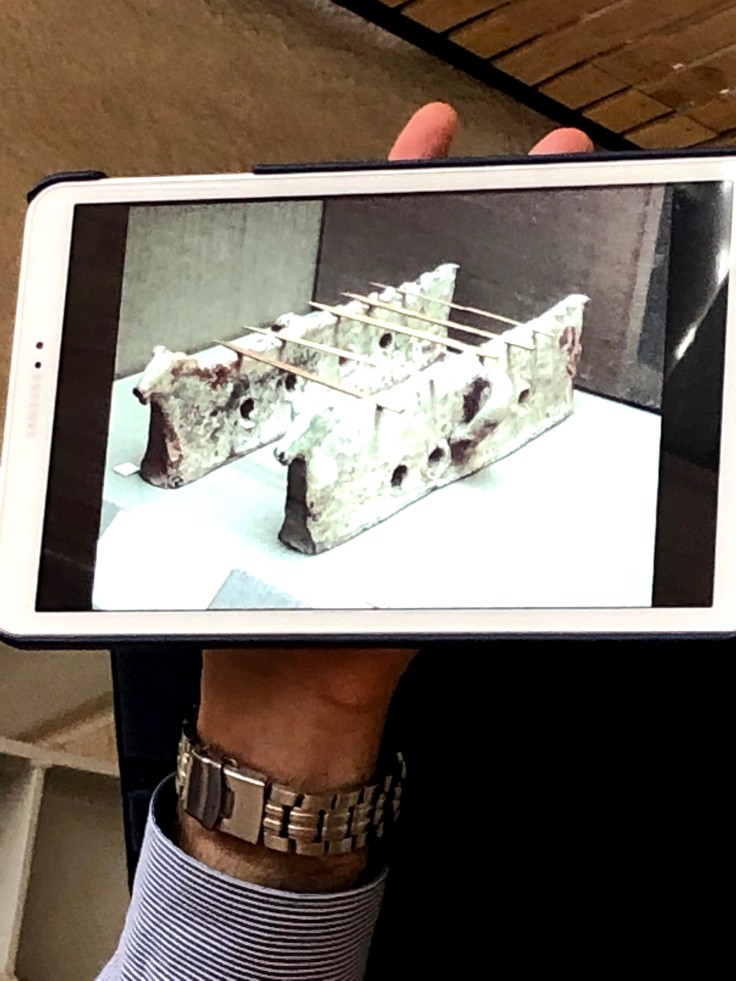
An ancient bar-b-q spit 
Pictures of paintings found – the pictures show the paintings exactly as they were found. 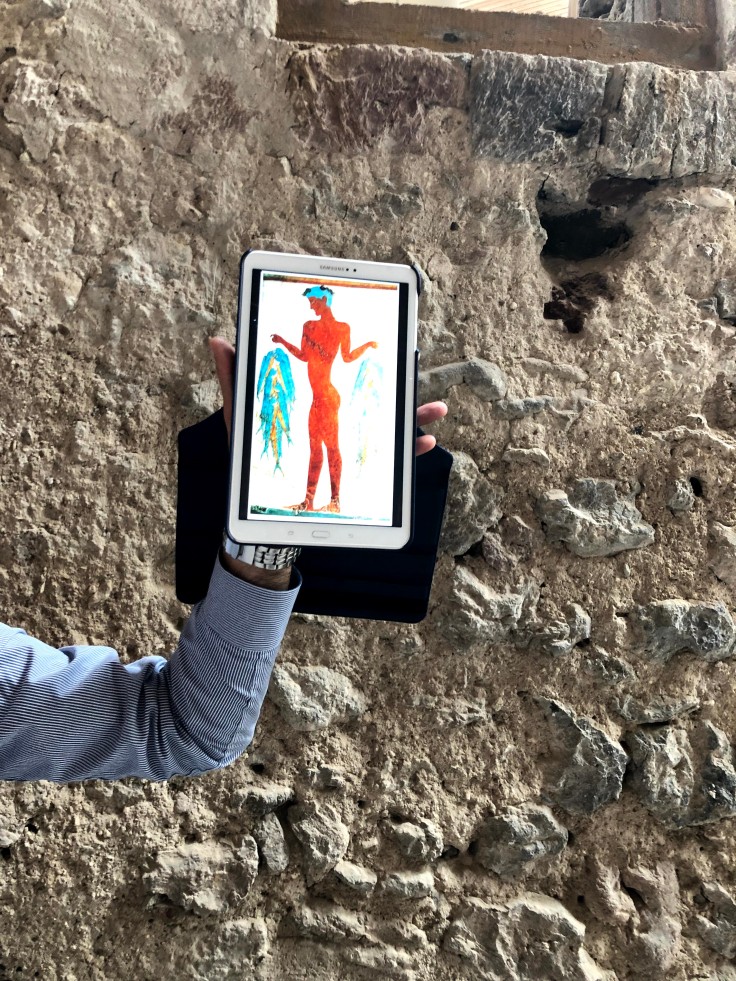

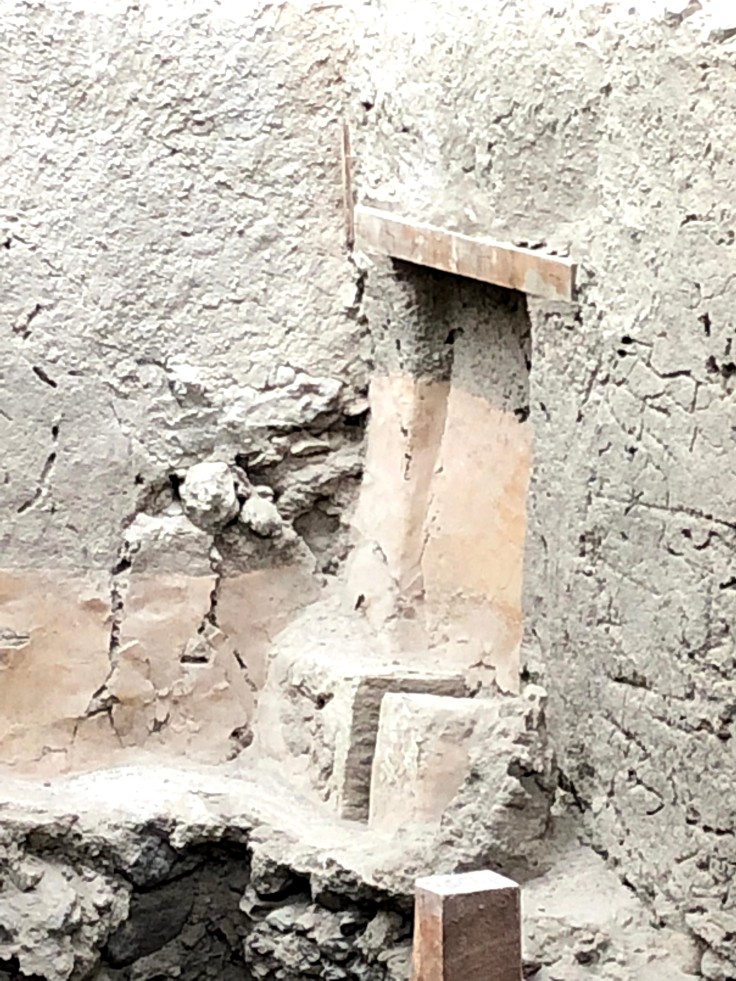
This is a toilet. The carved out area was for the pipe that would carry the sewage to the city sewer. 
Broken stairs are evidence of earthquake damage. 
Walking along a city street… 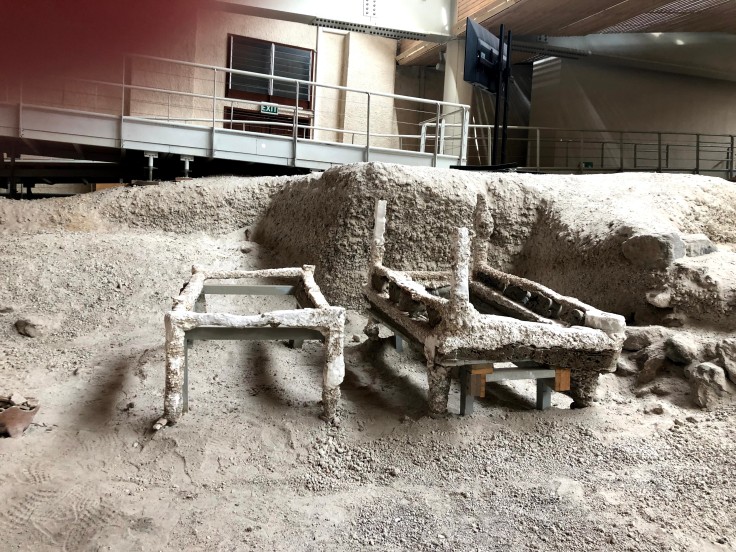
Bed frames 
Grapes in Santorini are grown on the ground. 
Ken discovered Donkey beer. 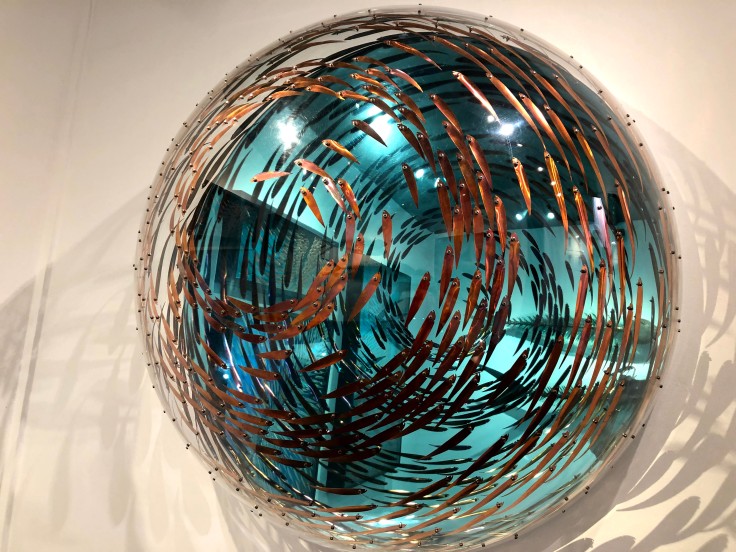
Art with a fish theme 
More fish-themed art 
This was Pam’s favorite 
Gotta love a city where young people can climb up on the roof of a church for a chat (they are to the right of the steeple) 
Every place is a great place for a photo in Santorini. 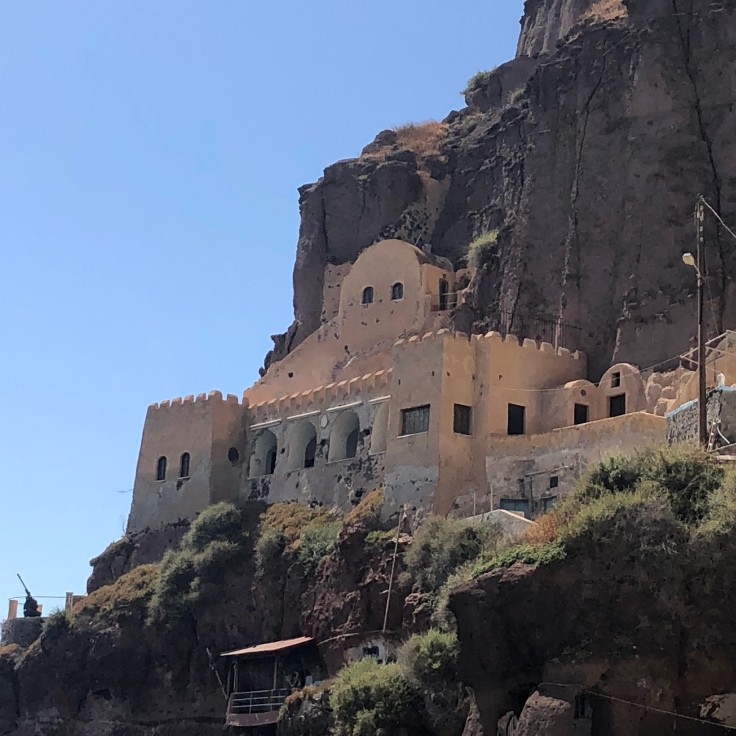
This is someone’s private home. Wouldn’t mind if it was ours! 
The cable car that will take us back down to the ship. 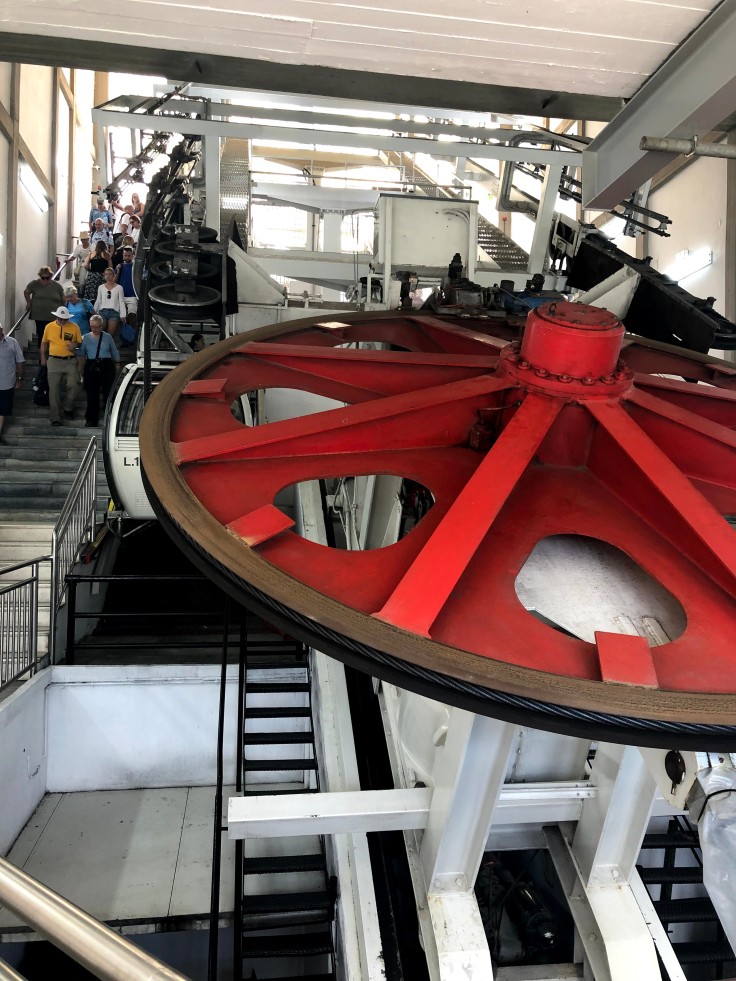
It operates on a pully system. 
Enjoying the ride!
